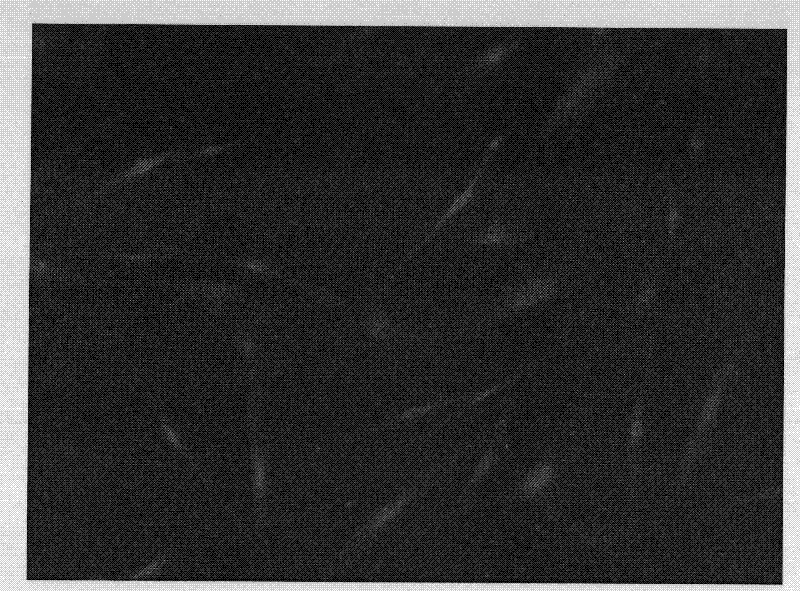Method for efficiently inducing umbilical cord mesenchymal stem cells to differentiate into Schwann-like cells
A technology of stem cells and Schwann cells, applied in the field of cell biology, can solve the problems of residual stem cells, patient trauma, application limitations, etc.
- Summary
- Abstract
- Description
- Claims
- Application Information
AI Technical Summary
Problems solved by technology
Method used
Image
Examples
Embodiment 1
[0023] Example 1 Method for Efficiently Inducing Human Umbilical Cord Mesenchymal Stem Cells to Differentiate into Schwann-like Cells
[0024] The operation steps are as follows:
[0025] (1) After culturing the umbilical cord mesenchymal stem cells to a subconfluent state, discard the old culture medium, and add a culture medium containing 1 mM β-mercaptoethanol to induce for 24 hours;
[0026] (2) Discard the induction solution described in step (1), wash three times with DMEM medium, add all-trans retinoic acid (RA) containing 35ng / ml for induction for 72 hours;
[0027] (3) Discard the induction solution described in step (2), wash three times with DMEM medium, add a composite induction solution [composed of 5ng / ml platelet-derived growth factor (PDGF), 10ng / ml basic fibroblast growth factor (bFGF ), 14μM forskolin (forskolin, FSK), 252ng / ml glial cell growth factor (GGF-2) or 200ng / ml nerve growth factor (heregulin-betal, HRG)] for 2 weeks, and change the solution every ...
Embodiment 2
[0030] Example 2 Method for Efficiently Inducing Human Umbilical Cord Mesenchymal Stem Cells to Differentiate into Schwann-like Cells
[0031] The operation steps are as follows:
[0032] (1) After culturing the umbilical cord mesenchymal stem cells to a subconfluent state, discard the old culture medium, and add a culture medium containing 1 mM β-mercaptoethanol for induction for 20 hours;
[0033] (2) Discard the induction solution described in step (1), wash it three times with DMEM medium, and add 35ng / ml all-trans retinoic acid (RA) for induction for 60 hours;
[0034] (3) Discard the induction solution described in step (2), wash 2 times with DMEM medium, add composite induction solution [by 6ng / ml platelet-derived growth factor (PDGF), 9 / ml basic fibroblast growth factor ( bFGF), 13 μM forskolin (forskolin, FSK), 260 ng / ml glial cell growth factor (GGF-2) or 210 ng / ml nerve growth factor (heregulin-betal, HRG)] induced for 10 days, and changed every 72 hours liquid. ...
PUM
 Login to View More
Login to View More Abstract
Description
Claims
Application Information
 Login to View More
Login to View More - R&D
- Intellectual Property
- Life Sciences
- Materials
- Tech Scout
- Unparalleled Data Quality
- Higher Quality Content
- 60% Fewer Hallucinations
Browse by: Latest US Patents, China's latest patents, Technical Efficacy Thesaurus, Application Domain, Technology Topic, Popular Technical Reports.
© 2025 PatSnap. All rights reserved.Legal|Privacy policy|Modern Slavery Act Transparency Statement|Sitemap|About US| Contact US: help@patsnap.com

